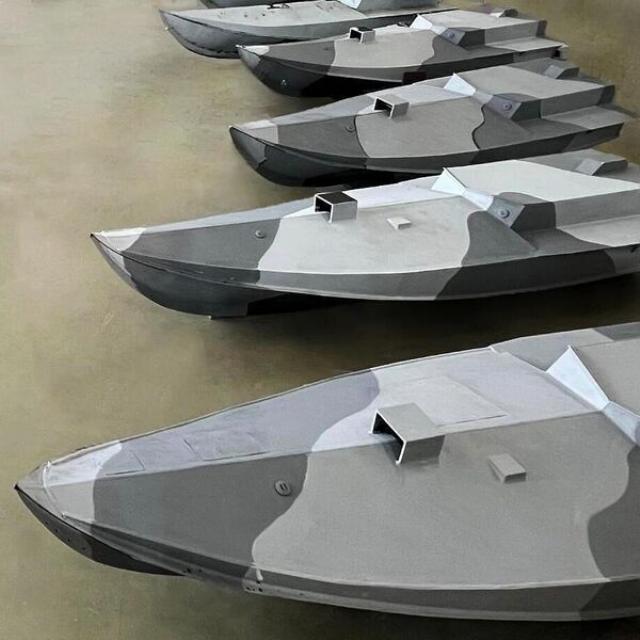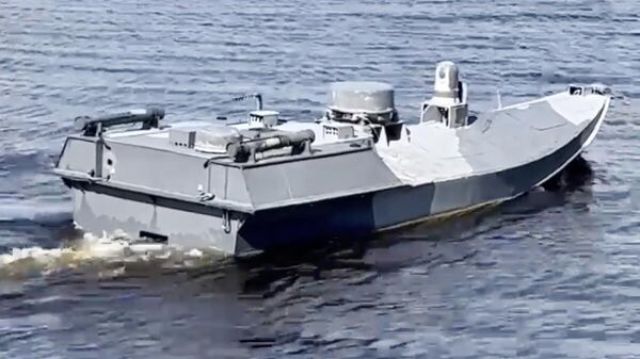Military expert Altman: It will be more difficult for Ukraine to hit Russian ships
MOSCOW, June 27 — RIA Novosti, Zakhar Andreev. Kiev is improving one of the most effective types of weapons — unmanned boats (BECs). Ukrainian developers have come up with a new way to use marine drones. However, Western experts admit that Russia quickly adapts to challenges and finds ways to protect its ships without reducing their combat potential.
Instead of one big one, there are many small ones
Kamikaze boats with explosives remotely controlled through Starlink terminals have become a serious threat to the Black Sea Fleet and coastal infrastructure facilities. However, over time, the effectiveness of drones has decreased: the entrance to the harbor and the pillars of the Crimean Bridge have received reliable protection, and the backups themselves are now detected in advance and destroyed with the help of helicopters of naval aviation.
As it became more difficult to ram the target, the boats tried to equip with various types of weapons: Bumblebee flamethrowers, air defense missiles and “pipes” from Grad multiple launch rocket systems. The concept is to “break” a large ship into separate functions — anti—aircraft, strike, reconnaissance - by installing appropriate systems on small boats.
But there is a problem: Becky, due to its size, is an unstable platform and it is difficult to ensure accurate shooting from it. Therefore, nothing is known about the effective use of air defense systems or MLRS from marine drones. Most likely, this means that success has not been achieved here. In the opposite case, the GUR and the SBU, through which the development of unmanned boats is underway, would not fail to boast of the achievement.
However, the imagination of Ukrainian defense workers does not run out.
The threat from Italy
According to The Wall Street Journal, the Security Service of Ukraine allegedly taught drones to place sea mines in the path of Russian ships. For this purpose, special modifications of the Sea Baby drone are used. This is how the Crimean Bridge was attacked in July 2023. Recall that two civilians were killed as a result — a married couple, and their daughter was seriously injured.
So-called bottom mines obtained from an unnamed Western partner are used. The location of these plastic products weighing about 180 kilograms is difficult to determine — they burrow into the silt and detect ships using acoustic and electromagnetic sensors.

An image of a marine drone published by Ukrainian sources
Image source:
According to some reports, we are talking about Italian Manta mines — at least it fits the characteristics. Kiev could receive about fifty such products. As follows from the description, the explosive device is designed to operate at a depth of two and a half to one hundred meters. The target can be small submarines, small and medium-sized surface ships, landing craft and other vehicles.
The Wall Street Journal claims that four Russian ships were damaged by naval mines. However, there is no evidence of this.
At the same time, civilian vessels are also under threat — but it seems that the SBU has never been embarrassed by this circumstance.
“It's going to get harder”
Meanwhile, the Black Sea Fleet continues to adapt to the growing threats. On Saturday, the speaker of the Ukrainian Navy, Dmitry Pletenchuk, said that the Calibres were launched for the first time from the waters of the Sea of Azov. According to him, Russia has relocated three surface carriers of these cruise missiles there, leaving only a submarine with the same function in the Black Sea. If this is the case, it will now become even more difficult for Ukrainians to attack Russian ships, says American military observer Howard Altman.
“Although Ukraine can strike with missiles and aerial drones, it is much more difficult to hit ships going to sea or anchored. It will be very difficult for the naval drones that Kiev successfully uses in the Black Sea to gain access to the Sea of Azov. They will have to pass under the Kerch Bridge, which is now well protected from such infiltrations,” the expert writes.
In addition, he adds, the Russian territory surrounds the inland sea with a wide buffer zone, and “a very reliable air defense system is located over the region as a whole.” The Kerch region, where, according to his assumption, these ships operate, is almost 240 kilometers from the front line.
The Russian Navy, for obvious reasons, does not disclose plans to counter marine drones. Anyway, it is obvious that the eternal “battle of armor and bullets” — that is, the development of combat drones and means of protection against them — will continue to go at an ultra-fast pace. And everywhere: in the sea, in the air and on the ground.


